Whether you are towing a tiny house, a tiny house trailer, or any trailer for that matter, there are some important rules and steps to follow to ensure your safety. In the following article, we explain in detail the equipment and steps you’ll need to take each time you move your trailer.
Be Prepared to Tow a Tiny House
Before you can tow a trailer you'll need to make sure you have the right equipment. Without the right equipment, you can damage your vehicle, trailer, and pose a risk to yourself and others on the road. Below is a list of everything you’ll need to get your trailer safely to your destination.
Tow Vehicle
When towing a tiny house, the tow vehicle is the single most important factor in the equation. No matter if you have everything else right, if your vehicle is undersized you are setting yourself up for problems.
Buy a Tiny House Tow Vehicle
One option is to buy a tow vehicle. However, if you don't plan on moving your tiny house often this may be overkill. Larger tow vehicles are not inexpensive and they also consume a lot more gas than a typical vehicle. You may be wanting the biggest vehicle they make to tow your house, but this will also be the vehicle you use for quick trips to the grocery store.
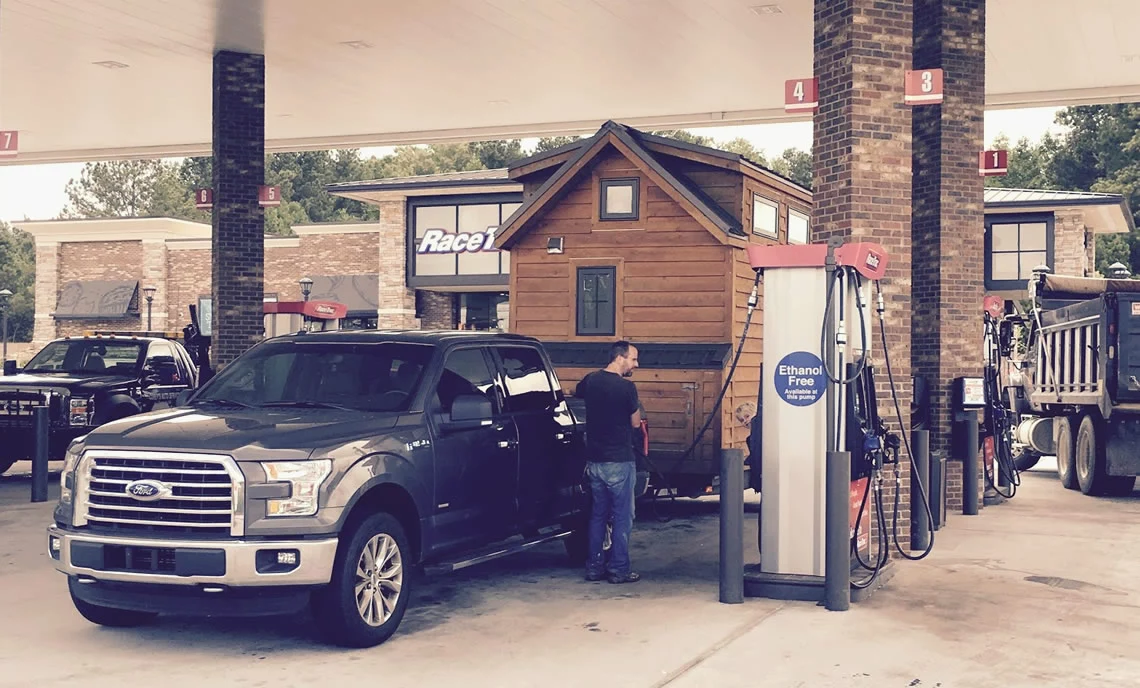
Towing a 12' tiny house with a Ford F-150
Typically, if you have a 20-foot home or less, you are looking for a minimum half ton truck like a Ford F-150, Chevrolet Silverado, or Toyota Tundra. But keep in mind here that not all half tons are created equal. There are differences in engine size, transmission gearing, fuel capacity, and towing packages. Not everyone who buys a half ton truck intends to tow something. Take a look at the table below.
| Vehicle | Engine | Towing Capacity |
|---|---|---|
| F-150 | 3.5L V6 | 5100 lbs. |
| F-150 | 3.5L V6 TC | 11,700lbs. |
This is the same model truck with a similarly sized engine, but way different towing capacities due to the towing package of the vehicle.
If you have a house that is between 20 and 28 feet, you are going to need the next step up: a one ton pickup. This is going to be your GMC Sierra 3500, Dodge Ram 3500 or Ford F-350. These are designed specifically for towing and are capable of towing so much that they could require a commercial driver’s license if operated at their full capabilities. But if you are towing less than 26,000 pounds (which you will be), your normal driver’s license will suffice. These larger trucks can also come as a dually, which has four wheels in the back and will handle a 32-foot home nicely. These have similar towing capacities but have the ability to handle a higher tongue weight. We'll discuss tongue weight in more detail below.
Rent a Tiny House Tow Vehicle
So you don’t want to own a truck. There is nothing wrong with that. There is a way that you can rent a tow vehicle to get your tiny house mobile. Now we are not talking about U-Haul or Penske here, as they restrict their trucks to lighter loads like towing your vehicle. Even though their trucks could pull a tiny house, they have purposely set up their trucks to make sure that you can’t use them for that. They either disable the hitch or they permanently weld a 2” ball to the truck. Those are meant for the lighter loads as opposed to the 2 5/16” ball found on larger, heavy-duty trailers.
If you go to a typical car rental place like Avis, Hertz or Enterprise can rental, you are going to come up with the exact same problem. We use enterprisetrucks.com. They specifically rent trucks meant for towing. They come with all the tow packages and the hitches required. And the prices are reasonable in comparison to buying a new truck. There are other companies out there, but make sure you read the fine print in the insurance to see if they cover transmission problems due to towing. If you don’t see it, they more than likely do not want you towing anything.
Outsource the Towing Altogether
Believe it or not, there are plenty of people who will move your tiny house for you. There are a few websites to help you find them. One that we've used successfully is uShip, where they have a bid system and ratings where you can pick who you want. Think of it as the eBay of shipping. You just want to make sure that you hire someone who is licensed and bonded, as they let pretty much anyone bid on the site. If you would rather not roll the dice with a bidding system, there are companies out there that have a more fixed price model, but expect to pay more.
Hitch
The hitch is the component that is bolted or otherwise attached to your tow vehicle. These are rated for the maximum load they can handle which is designated by a class rating. The rating includes two numbers, the gross trailer weight and the tongue weight. It is important that you select a hitch class that is correctly sized for both your vehicle and trailer.
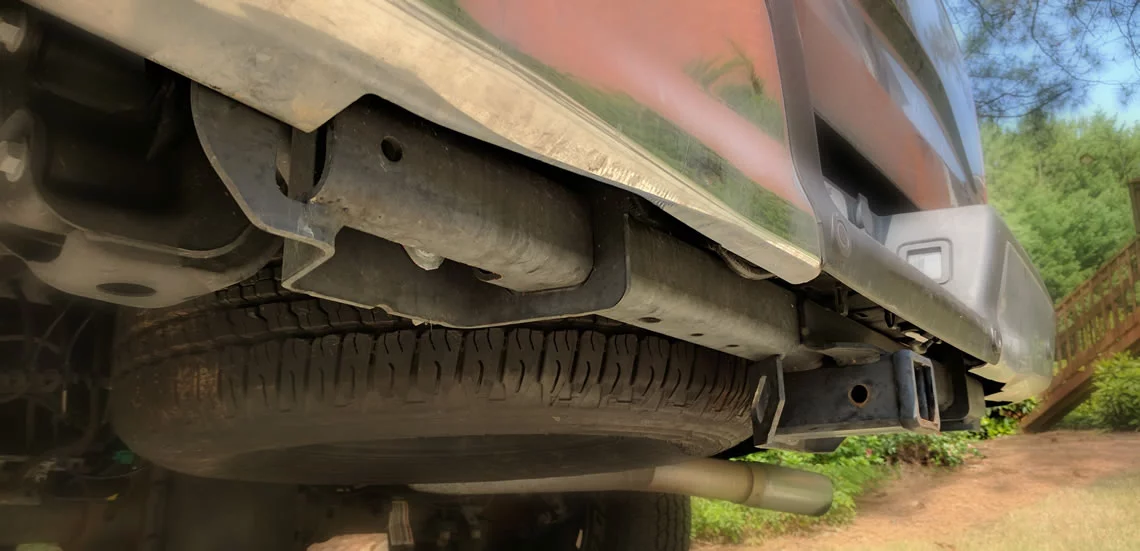
Truck Factory Hitch
| Class | Maximum Gross Trailer Weight | Maximum Tongue Weight |
|---|---|---|
| Class I | 2,000 pounds | 200 pounds |
| Class II | 3,500 pounds | 350 pounds |
| Class III | 5,000 pounds | 500 pounds |
| Class IV | 10,000 pounds | 1000 pounds |
| Class V* | 17,000 pounds | 1700 pounds |
The hitch will have a receiver tube where a removable ball mount will be inserted. Receiver tubes come in three different sizes which correspond to the hitch’s class rating.
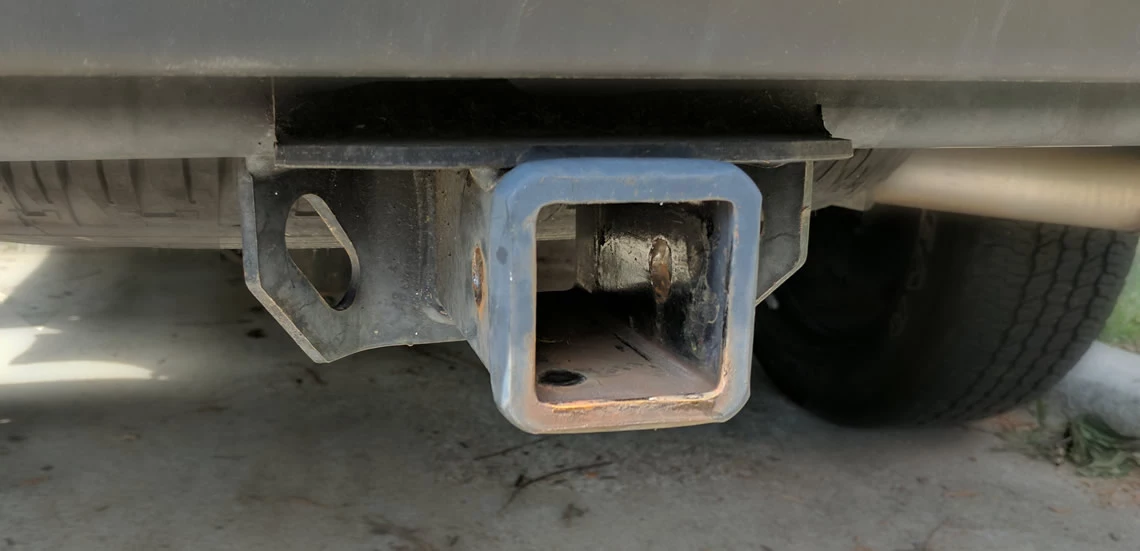
Receiver Tube
| Class | Size |
|---|---|
| Class I & II | 1 1⁄4 in |
| Class III & IV | 2 in |
| Class V | 2 in or 2 1⁄2 in |
The ball mount is removable to allow for a different size hitch ball to be easily switched out without having to switch out the entire hitch. Ball mounts come with either a fixed drop (distance from center of receiver) or an adjustable drop.

Fixed Drop Ball Mount and Adjustable Drop Ball Mount
Hitch balls come in different sizes and capacities as well, which will need to be matched up with your trailer.
| Size | Capacity |
|---|---|
| 1 7⁄8 in | Up to 2,000 lbs |
| 2 inches | 3,500 lbs to 8,000 lbs |
| 2 5⁄16 in | 6,000 lbs to 40,000 lbs |
The size and capacity of a hitch ball is marked on the top of the ball.
Most tiny house trailers have a 2 5/16 coupler. However, Some very large trailers have a pintle ring and require a pintle hitch. Pintle hitches have the capacity to pull extremely heavy loads of up to 60,000 lbs.
Gooseneck trailers don’t use a coupler/ball system. They instead require a special hitch that is mounted in a truck bed.
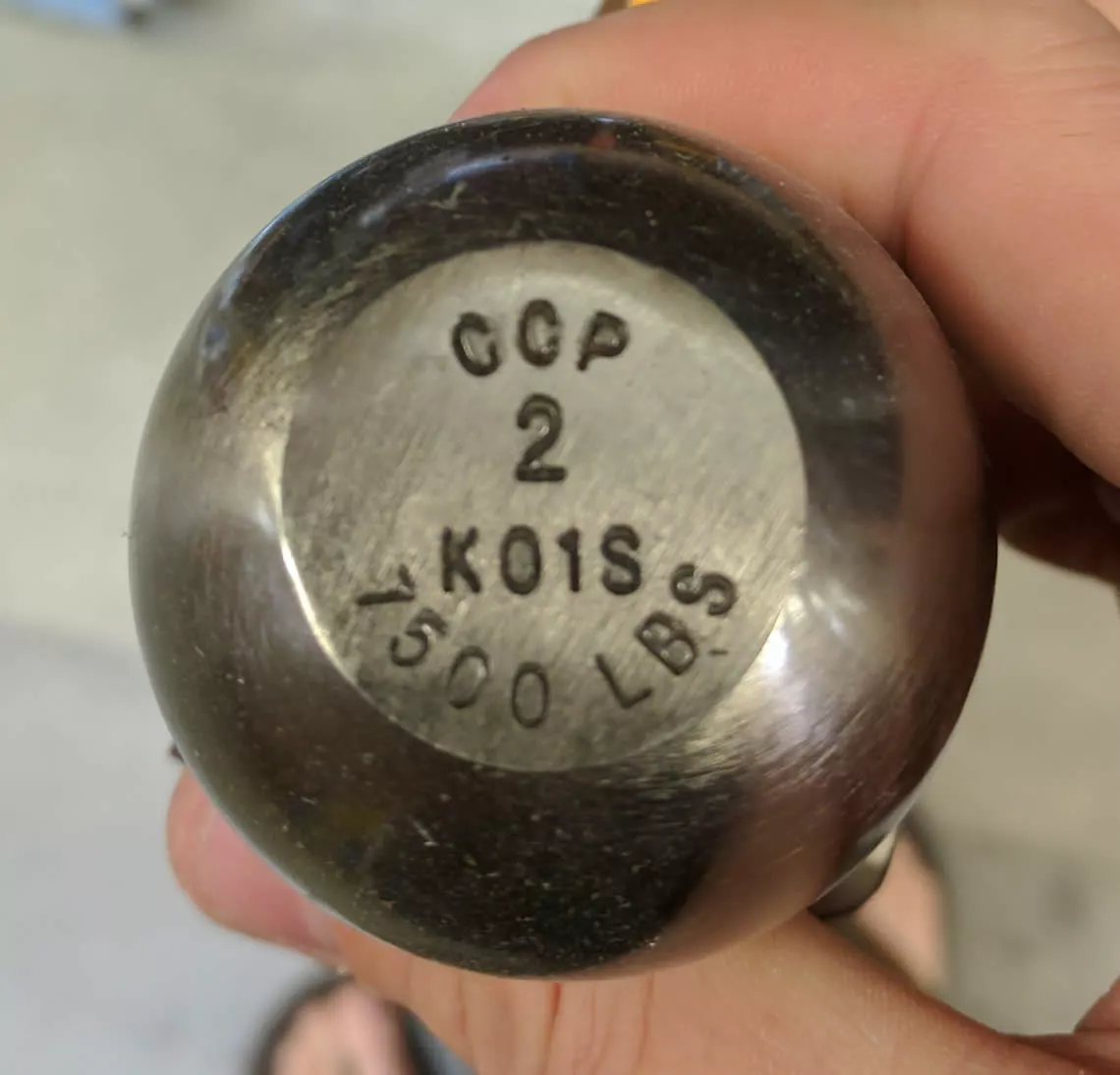
2 inch Ball rated at 7500 lbs.
Brakes and Lights Connection
To provide the trailer power for the lights and brakes (if applicable), a wiring harness from the trailer is connected to the tow vehicle. There are two different types of connectors: 4-way and 7-way.
If the trailer is for lighter duty applications and does not have brakes, then the connector will be a 4-way plug. If the trailer has brakes, then the connector will be a 7-way plug. Because of the size and weight capacity of tiny house trailers, brakes are required and thus a 7-way connector is used.
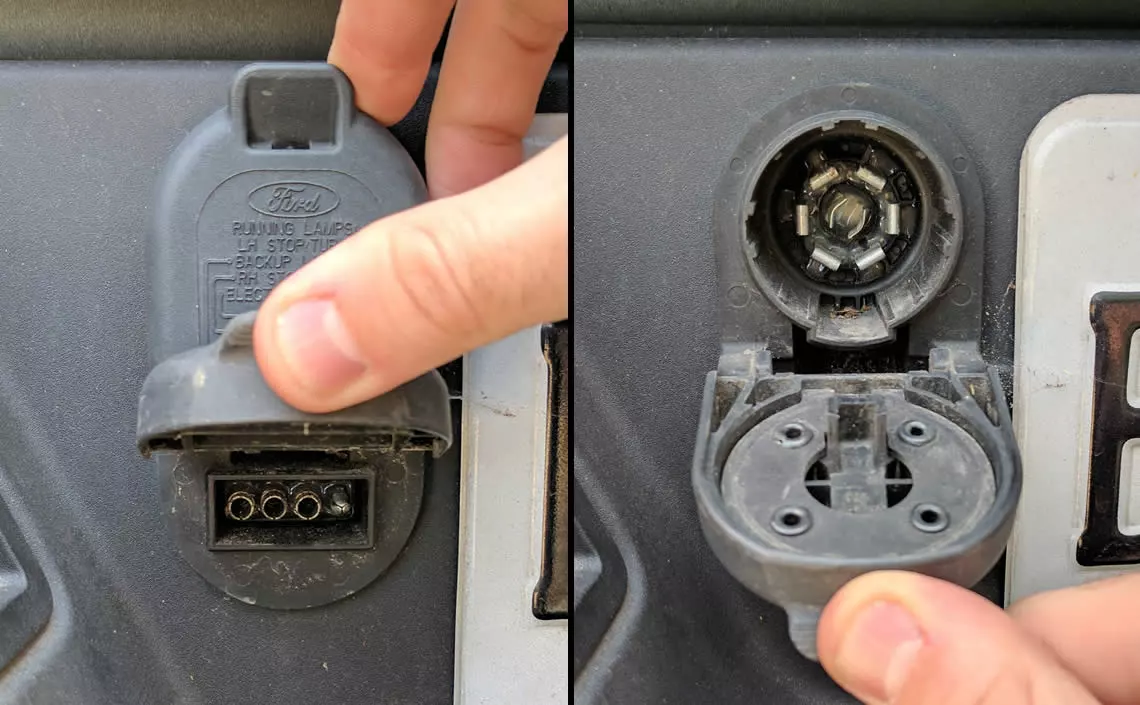
4-pin and 7-pin Connectors
For a tow vehicle to accept a 7 way plug, it must have a device called a brake controller. This device sends a signal to the trailer to enable the brakes to activate when the brakes of the vehicle are activated. The brake controller allows for the level of the brake signal to be adjusted to properly match that of the tow vehicle and weight of the trailer. If the brake signal to the trailer is too high, then the trailer brakes will be too strong resulting in the trailer brakes locking up and the tow vehicle dragging the trailer. If the signal is too low, then the trailers brakes will be too weak resulting in the trailer pushing the tow vehicle. For directions on how to properly adjust the brake signal strength of your controller, please refer to your vehicle or brake controller manual.
Larger trucks that are designed for towing will include a brake controller. If your tow vehicle does not have a brake controller, an aftermarket controller can be added or an adapter can be used so that a 7-pin connector can be attached to a 4-pin plug. Using an adapter is not normally recommended and is discussed later in the section: ‘Connecting the Trailer’.

Factory Installed Brake Controller
License
The rules for the type of license you need to tow a tiny house vary by country. In the US, you generally don’t need a commercial driver’s license (CDL) if you are towing a recreational vehicle for personal use. Tiny houses are often considered RV’s, and so it shouldn’t require any special license. Even if you are transporting a tiny house for non-personal use, a CDL isn’t required unless the gross combined weight rating (GCWR) is more than 26,000 pounds. However, in Canada, any trailer over 4500 kilograms (9920 pounds) requires a Class A driver’s license. So, check your local laws to see what is required.
Prior to Connecting the Trailer
Set Hitch Height
You will want the trailer to be as level to the ground as possible when towing. To achieve this you will need to determine the desired hitch height and then use a ball mount with the correct drop to achieve that height. Alternatively you can use an adjustable height ball mount.
To determine the desired hitch height, use the trailer's front jack to get the trailer as close to level as possible. Then measure the height of the coupler relative to the ground. The hitch height will then need to be set to a height higher than this measurement. The amount that it needs to be higher will be determined by the weight of the trailer load as the springs of the tow vehicle will compress under that weight. This is a trial and error process that may require adjustment when attaching the trailer.
Check Tongue Weight
Tongue weight is the weight that is exerted directly at the tongue of the trailer. The distribution of the total weight of your trailer and its load will determine this value.
Knowing your trailer's tongue weight is extremely important since your tow vehicle can only handle a specific amount, but too little can make towing a trailer unsafe. Learn more about tongue weight and weight distribution hitches.
The easiest way to determine your trailers tongue weight is by using a tongue weight scale. Unfortunately, this item is not inexpensive at a cost of over $100.
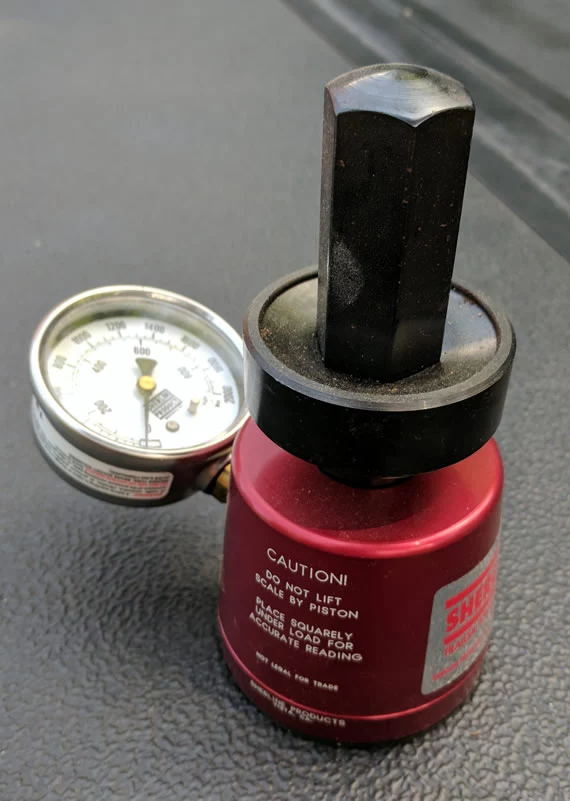
Tongue Weight Scale
Connecting the Trailer
Before you can tow a trailer it needs to be properly connected to the tow vehicle.
Coupler
The coupler of the trailer will have a locking mechanism or latch on it to prevent it from becoming detached while in use. This mechanism will need to be disengaged prior to sliding the coupler over the hitch ball. Once the coupler is in place, the latch can be engaged. A pin or lock should be used to keep the coupler latch in the locked position.
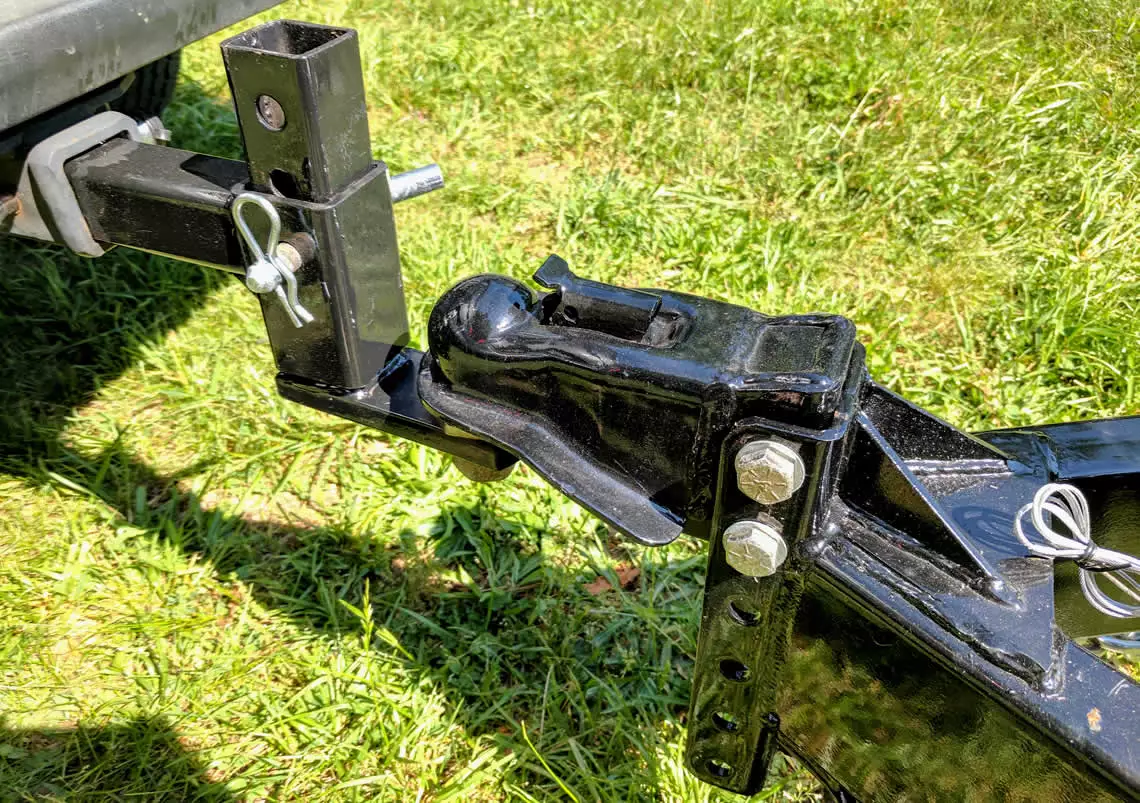
Trailer Coupler Connected with Top Latch Engaged
Chains
The trailer chains attach to the hitch on either side of the tube receiver. The chains should be crossed, meaning that each chain attaches to the hook on the opposite side of the hitch. If the chains are so long that they make contact with the ground after they are attached, they can be twisted together to remove slack.
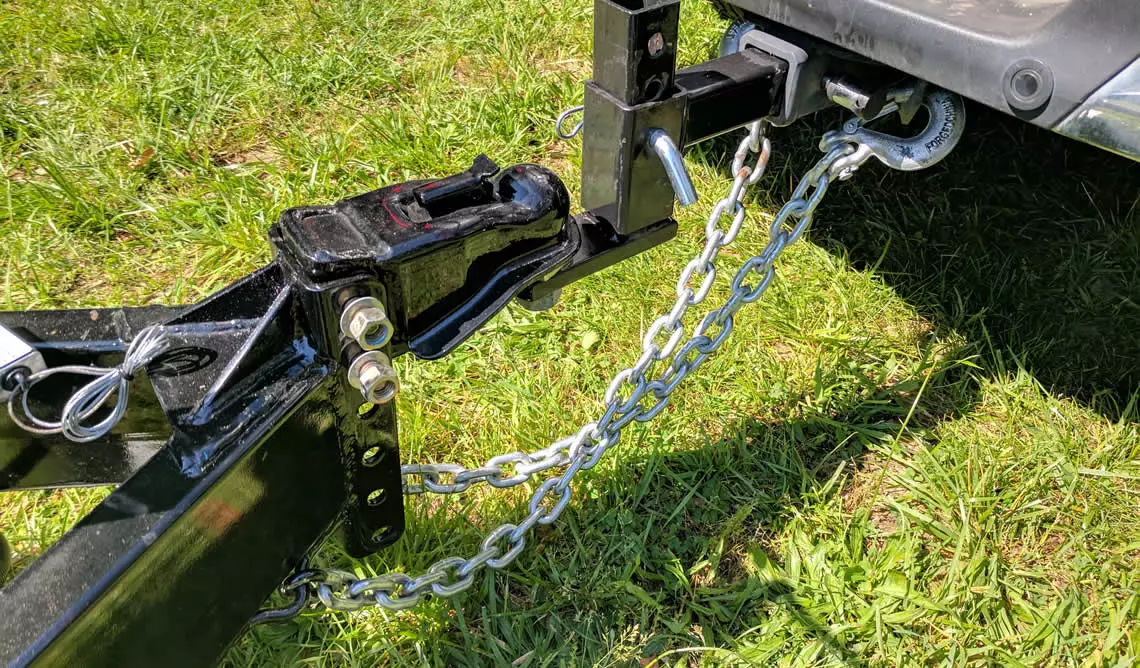
Trailer Chains Cross Connected
Trailer Wiring Harness
Attach the trailer wiring harness to the tow vehicle. As previously mentioned, your tow vehicle will need to have a compatible plug.
In the event that your vehicle only has a 4-pin connector, there are adapters that will convert a 7-pin connector to a 4-pin connector. However, caution should be used as these will not provide power to the brakes of the trailer and can result in an unsafe condition, especially on a loaded trailer.
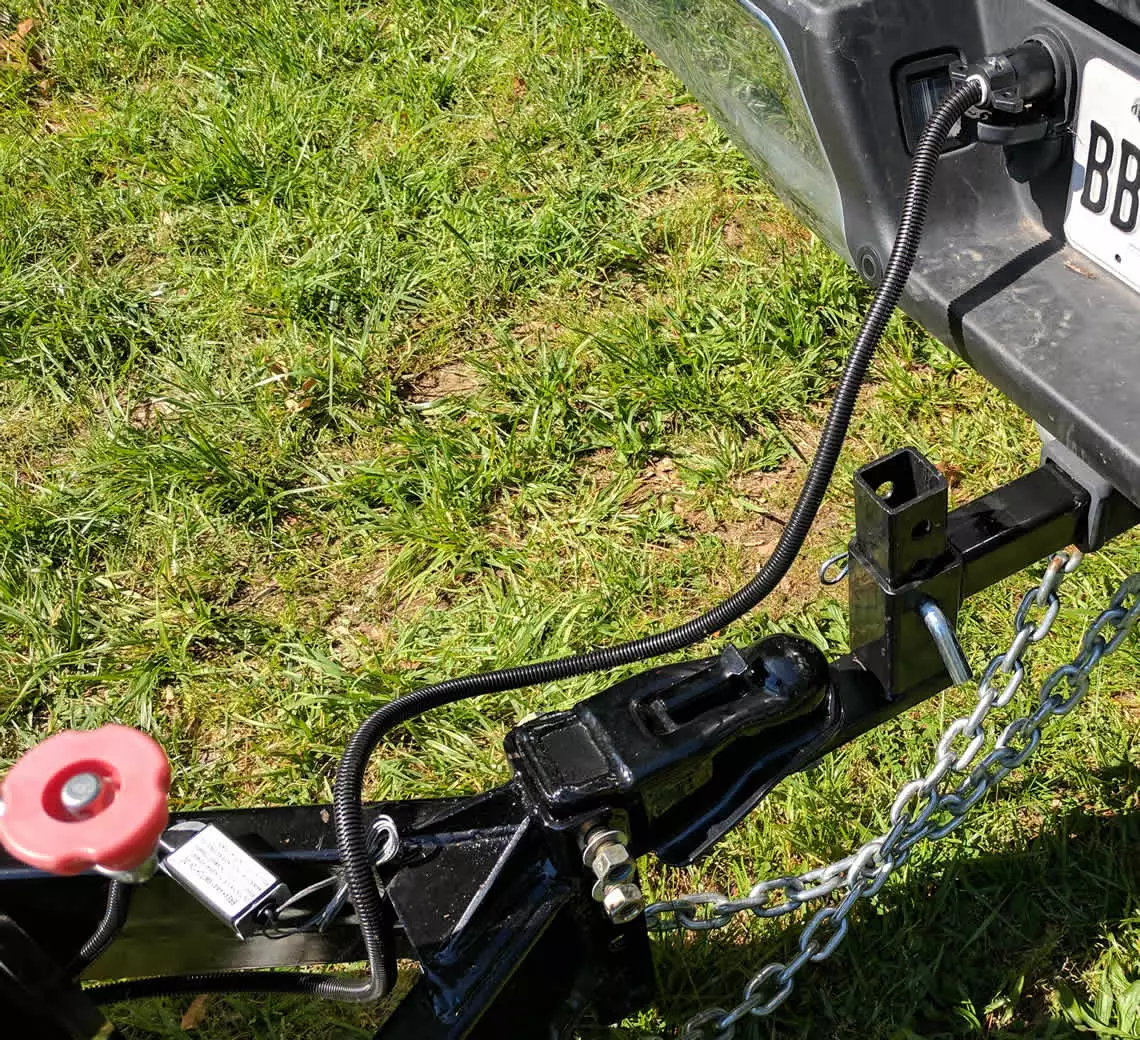
Trailer 7-Pin Wiring Harness Connected
Breakaway Wire
Trailers equipped with electric brakes include a breakaway kit. This device engages the electric brakes of the trailer if it becomes separated from the tow vehicle. To know if it has separated, an additional non-powered wire is attached from the trailer to the tow vehicle. This wire is connected to a physical switch that activates the brakes if it is pulled free. To ensure proper operation, this wire should be attached to a non-removable piece on the tow vehicle (i.e. not the ball mount).
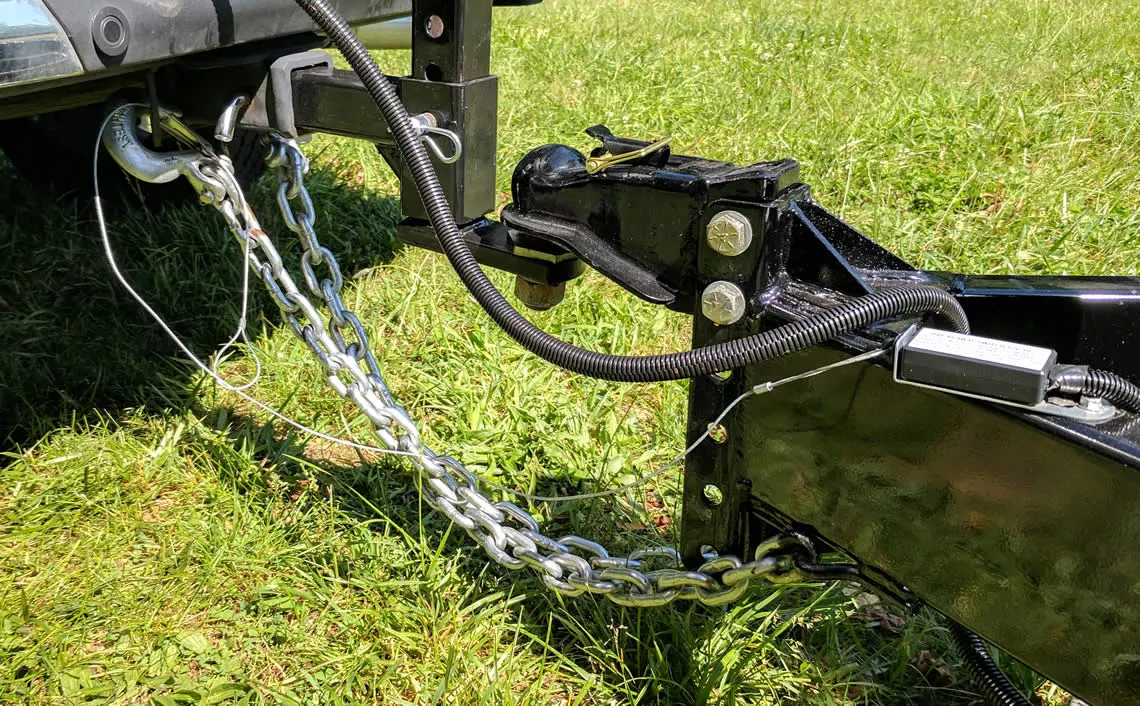
Trailer Breakaway Wire Attached
Prior to Towing
Now that the trailer is connected, you’ll want to make a few additional checks prior to getting on the road.
Tires
Check to make sure the tires are properly inflated, that the lug nuts are tight, and finally that there is no unusual wear on the tires.
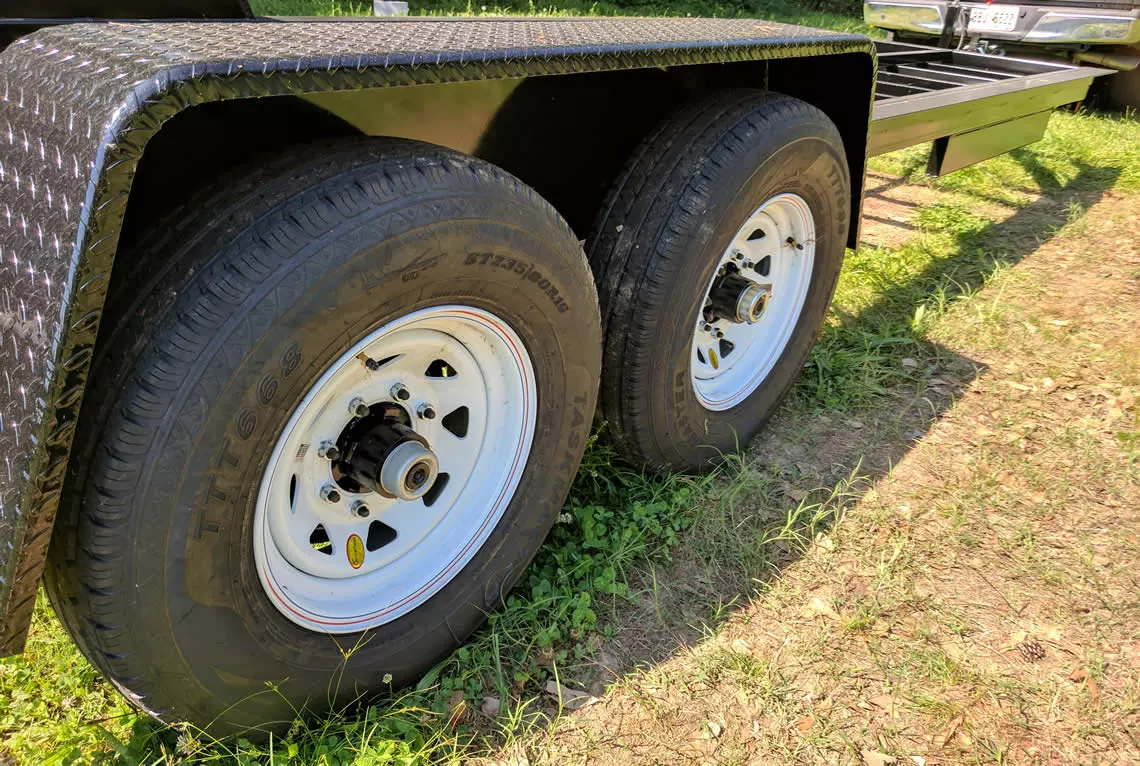
Trailer Tires
Lights
Verify that the lights are operating correctly. This includes the brake lights, turn signals, and running lights.
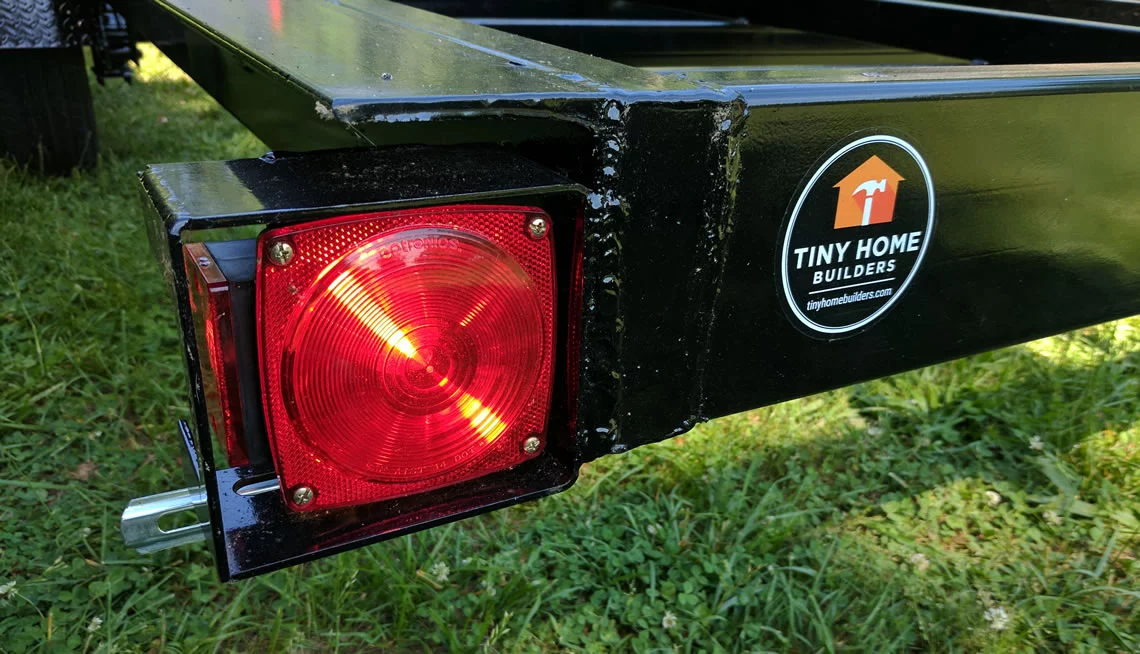
Trailer Lights
Breakaway Kit Battery
The brake controller includes a battery that is used to engage the electric brakes in an emergency. This battery is charged each time the trailer is hooked up to a tow vehicle. If the trailer has been sitting for a long time you will want to check to make sure this battery has a charge prior to moving the trailer. Some breakaway kits include a test button to easily test the battery. If the battery does not have a built-in test function, the battery compartment will need to be opened with a screwdriver and the battery tested with a voltmeter.
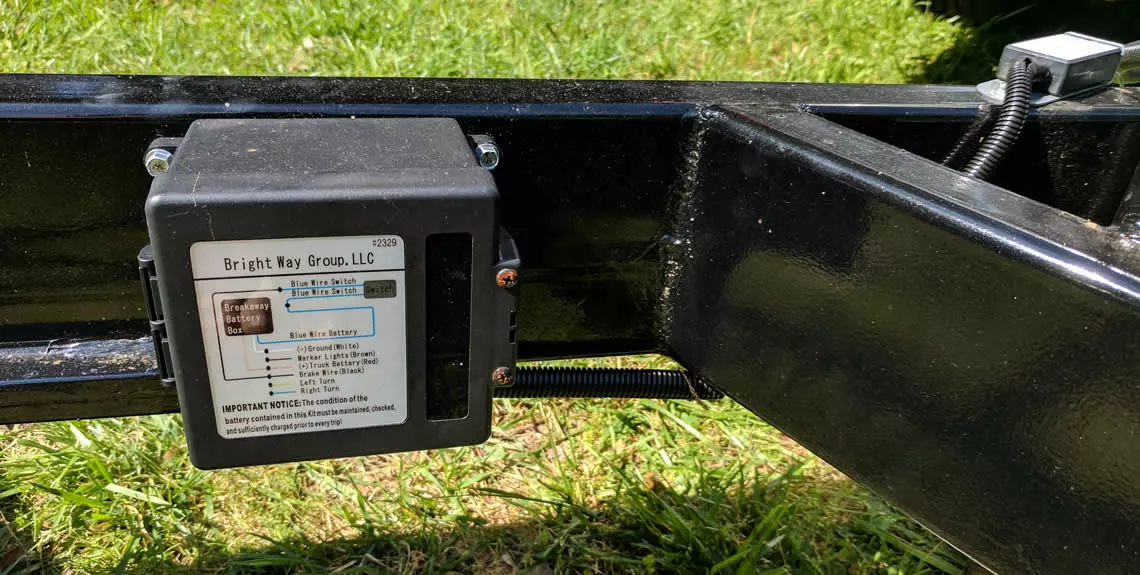
Breakaway Kit Battery
Pre-Move Checklist
In addition to making sure your trailer is roadworthy, you will want to examine your home as well. This includes checking on many items that are easy to forget, even if you are moving regularly. A printed list or a checklist app on your phone can be helpful in making sure you remember everything.
Some of these items may include:
- Tow vehicle fuel tank full
- Windows and vents are closed
- Blinds are down and secure
- Interior doors closed
- Kitchen countertops are clear (items placed in sink)
- Refrigerator latched
- Jacks are up or removed
- Utilities are disconnected
- Storage compartments secure
- Wheel chocks are removed
- Door is locked
Towing
Now that the trailer is connected and the safety checks are complete, the trailer is ready to be moved. Fortunately, towing a trailer in the forward direction is not much different from driving a vehicle without a trailer. The biggest differences are that the driver will need to be aware of the added length and allow for the proper clearances, particularly while turning. Additional space should also be maintained between the tow vehicle and other vehicles in front of it, as the additional weight of the trailer may increase the distance it takes to stop.
The real challenge of towing comes when the trailer needs to be backed up. The reason this is more difficult is that the trailer moves in a counterintuitive direction when reversed. For instance, in a vehicle without a trailer, if the steering wheel is turned left while the vehicle moves in either the forward or reverse direction, it will turn to the left. But when a trailer is connected and the vehicle is backing up, the trailer moves in the opposite direction of the steering wheel (i.e. steering wheel turns left, trailer goes right).
To reduce the stress of towing a trailer, especially if the driver is new to towing, the trip should be planned to avoid having to back up as much as possible. For instance, look for gas stations that have pull-through pumps with plenty of clearance on both ends of the pump and that aren’t too busy. Also, If planning your gas station stops ahead of time, remember that with the added trailer weight you won't’ be able to go as far between stops for gas. Or if a u-turn is required, do so in a large parking lot where there is plenty of room.
Even with planning, not all reversing can be avoided. Fortunately, there are a few techniques that can be used to make this job easier. The easiest is to grab the steering wheel from the bottom, then as you watch the trailer over your shoulder, turn the steering wheel in the direction the trailer needs to move. By grabbing the steering wheel from the bottom, the steering direction is again lined up with the vehicle direction. The turns made should be minimal as it is easier to over steer a trailer. It can also be helpful to have a spotter, or a person standing near the back of the trailer. This person can help guide the trailer and alert the driver before accidentally hitting anything.
Once on the road, the trailer should be inspected at each stop. Pay particular attention to the wheels and lug nuts. Check the lug nuts at 50 miles, 100 miles, 500 miles, and then every 1000 miles. The wheel bearings should also be greased after the first 500 miles. To grease the bearings, remove the cap in the center of each wheel and use a grease gun to inject new grease. Finally, check the underside of the trailer for debris.
A trailer with a properly distributed load will drive much better and feel more solid than an empty trailer. A trailer with no load will bounce around considerably more given the heavy-duty springs are barely compressed. If an unloaded trailer starts to get into a cycle of vibration it can be helpful to accelerate to pull it out of the cycle and reduce the vibration.
If a loaded trailer sways easily, it is likely due to an improperly distributed load. Too much sway normally indicates too little tongue weight and immediate effort should be made to correct this.